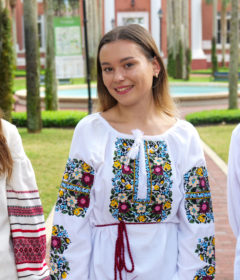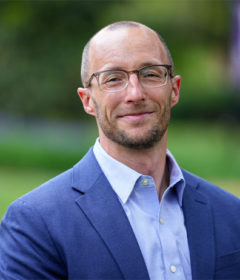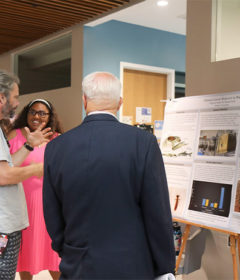Big Solar Power Coming Soon
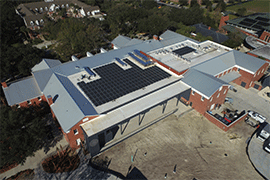

Solar panels atop the newly renovated and expanded Carlton Union Building will begin generating power to the university very soon — within a month or so, according to Al Allen, Stetson’s associate vice president of Facilities Management.
“Sometime mid-February or early March we will be producing power off of that roof,” Allen said.
A total of 231 solar panels are in place, expected to produce an estimated annual value of 131.2 MWh. For comparison, that same amount would equal approximately 65 percent of the power required annually by the adjacent three-story, 24,000-square-foot Marshall and Vera Lea Rinker Welcome Center.
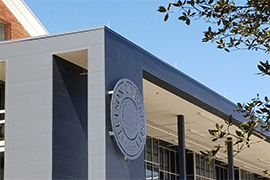
The $180,000 solar project, internally labeled the CUB Dining Room Flat Roof, awaits only a sign-off from Duke Energy, which over the next few weeks will inspect and approve use of the electricity generated from the panels to go through its power system, Allen said.
That approval will mark the culmination of another ambitious effort: Stetson’s Revolving Green Fund.
In May 2017, following lengthy groundwork by students and administrators, Stetson established the green fund, with all students paying a $5 fee each semester to fund environmental projects. Nathan Bodger ’19, an Environmental Fellow, led the effort to build student support, which included surveys and ultimately led to Student Government Association approval.
In November 2017, students were asked to submit ideas for projects that would save the university money and decrease environmental impact. Nearly 200 suggestions were received, and the clear winner was solar, conceived on the idea of efficiently generating electricity.
Originally, university officials considered installing a solar array at a site just off campus. However, the CUB location ultimately won out by virtue of cost-effectiveness, noted John Wimer, manager of Energy Conservation and Technical Support at Stetson. Also, the CUB site would put the solar project “right above the students’ heads rather than off campus,” said Jimmy Dean ’20, one of the students who helped steer the project last spring.
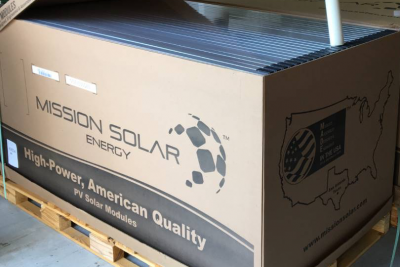
Throughout the solar project, the Student Government Association collaborated closely with Stetson’s Environmental Fellows and the Environmental Working Group, among others. Ultimately, both the students and the university helped to fund the project. (See below.)
This isn’t the first time solar energy has been generated on campus. In 2010, solar thermal collectors were installed to heat the swimming pool at the Hollis Center. In 2016, solar panels were installed on poles to light the parking lot adjacent to the Rinker Welcome Center.
Yet, the expansive solar array atop the new-look CUB — originally constructed in 1957 — will shine most brightly, Allen concluded.
“This is an exciting time,” Allen said.
-Michael Candelaria
FUNDING THE SOLAR ARRAY
Students and university administrators effectively came together to make the CUB’s $180,000 solar array happen. Stetson’s Revolving Green Fund — with all students paying a $5 fee each semester toward environmental projects — paid $60,000. The Student Government Association and the university each paid $30,000, with the remainder of the funding coming from a loan to be repaid by the energy produced, according to Bob Huth, Stetson’s executive vice president and chief financial officer.

